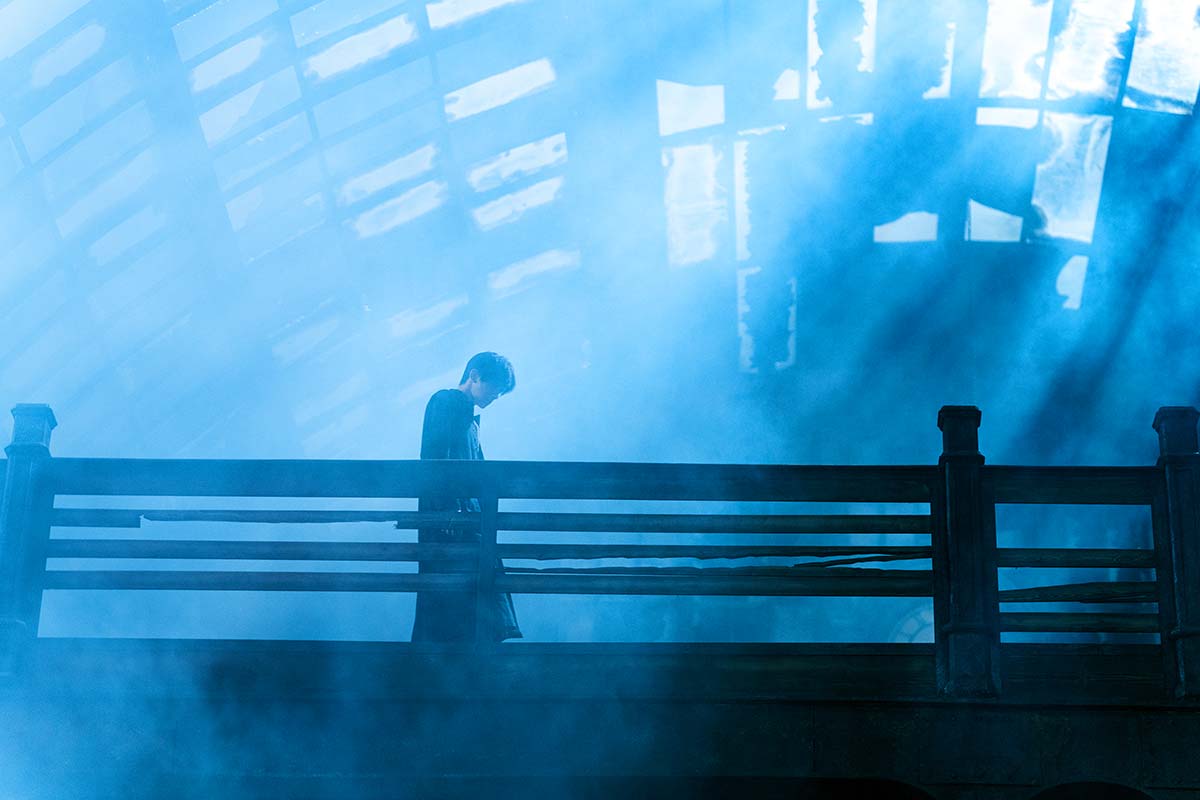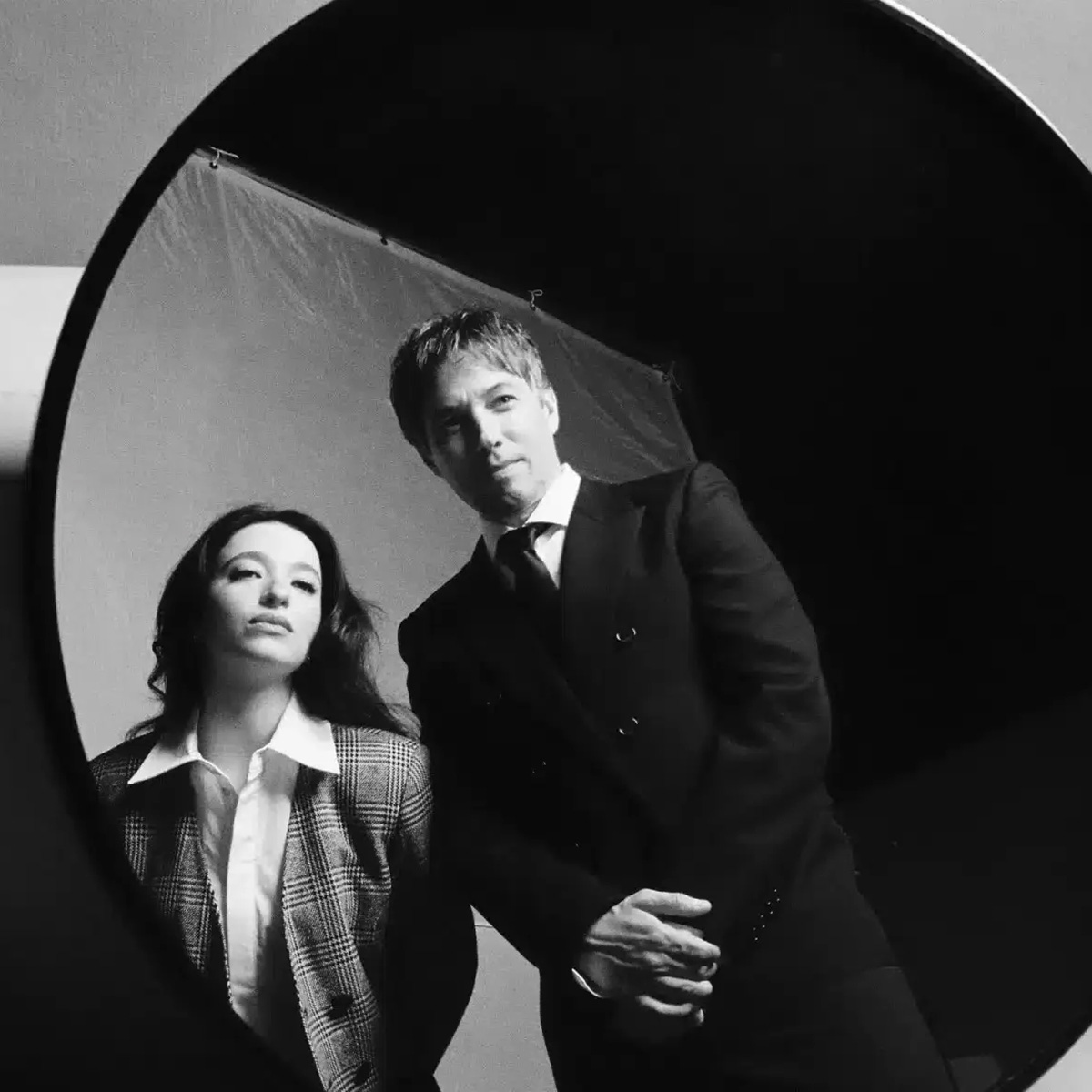
A six-part experimental epic about death, dreams and the prism of image-making, with Resurrection the 35 year-old filmmaker Bi Gan has achieved something deeply ambitious.
For better or worse, the love letter to cinema is now a genre in itself. As a form that often comes across monotonous or mawkish in its referentiality, it is admittedly difficult to pull off a fitting tribute when the industry being eulogised is in many ways a zombified version of the functional art system that came before; beholden to brand worship and cowering politics as it continues to weather a technological assault encompassing the limitations of streaming distribution, the insistent creep of AI and the erosion of its media class.
Bi Gan’s offering—a six-part experimental epic about death, dreams and the prism of imagemaking—is a very different beast to the masturbatory sentimentality we’ve come to reflexively expect from films on film. Inscrutable and arresting in equal measure, Resurrection is the auteur’s answer to The Matrix: impish and metaphysical, the film is a hyper-stylised ode to cinema within a sci-fi tinged allegory about the latent power of creative life. The director has emphasised the project’s connection to Chinese film history in particular: “This film is my emotional response to this land,” he told Variety last week: “a celebration of the lives of people who have shared this space with me over the past century.”
Resurrection begins as a silent film at the dawn of the 20th, toying with the fourth wall and outlining its premise through exclamatory title cards: that, due to its deleterious effect on their body and lifespan, humans have largely elected to stop dreaming; that those who persist are called Fantasmers, who “bring chaos to history” and “make time jump.” In opposition are the Big Others, who possess the ability to detect these rebels by separating illusion from reality.
With this surreal odyssey through phantasmagoria, image, and sound (including music we can thank French electro-rockers M83 for composing), Bi Gan reaffirms his position as an arthouse master with the playful sensibility of a trickster god; Resurrection is a love letter to cinema like no other, one you’ll want to read over and over and over again.
One such woman (Shu Qi, wearing an exquisite silk blouse in a deep, refulgent shade of teal) chases down a deformed Fantasmer (Jackson Yee, made up here as a pallid movie monster by way of Murnau’s Nosferatu and Munch’s Skrik) through a series of Dutch angles and German Expressionist scenery. She locates him in an opium den as part of an elaborate scene that effectively takes place as five separate ones, an intricate scape of highly ornate production design (courtesy of Liu Qiang and Tu Nan): baroque mahogany furniture, wood-cut puppets, a white peacock, and what are perhaps some of the most beautiful stop-motion animated poppies committed to film.
From here, the narrative jumps a few decades forward: the Fantasmer is reborn as the murder suspect in a 1920s noir; then a man in the snowy ruins of a Buddhist temple, trying to parse if the person in front of him (Chen Yongzhong) really is a spirit who emerged from his broken tooth, as he claims he is. In the next reality, Yee’s Fantasmer is a streetwise conman who takes on a child apprentice (Guo Mucheng). After this, a supernatural romance unfolds on the turn of the millenium; the couple—the Fantasmer with a bleached buzz cut and a bewitching young woman (Li Gengxi) in white Converse high-tops—are pursued by mobsters on motorbikes and lit by a sky that washes every exterior in a striking vermilion.
With Resurrection, it seems clear to critics that the 35-year-old filmmaker has accomplished something immensely ambitious, yet consensus is murky: The Guardian’s review concludes with an emphasis on the film’s “riddling quality.” Deadline supposes it could be “the worst film in Competition in Cannes,” conceding that its director would nevertheless make a good Palme pick. In the end, the jury chose to invent a special prize in order to honour the unique spirit of the movie; this year’s president, Juliette Binoche, likens it to an “unidentified flying object.”
Yet for all the talk of Resurrection’s supposed impenetrability, it doesn’t resist analysis as much as render it axillary to the entertainment at hand. Clocking in at 160 minutes without an interval, the project does present a kind of filmic challenge to the viewer. But it is less of an endurance test than a highly sensory encounter; demanding your attention while working to earn every second of it.
It may not be to everyone’s taste, but Bi isn’t afraid of being misinterpreted: “Because [global] audiences don’t understand my internal world and don’t live in the areas I exist in, there will be a difference, a distance between their understanding of the film and my experience with it.”
While the film invites diverse interpretation by its very nature, it’s hard to imagine a response to it that couldn’t be characterised as awe. With this surreal odyssey through phantasmagoria, image, and sound (including music we can thank French electro-rockers M83 for composing), Bi Gan reaffirms his position as an arthouse master with the playful sensibility of a trickster god; Resurrection is a love letter to cinema like no other, one you’ll want to read over and over and over again.





